Zhao Wangcheng Ruins: A Hidden Gem for History Buffs and Culture Enthusiasts
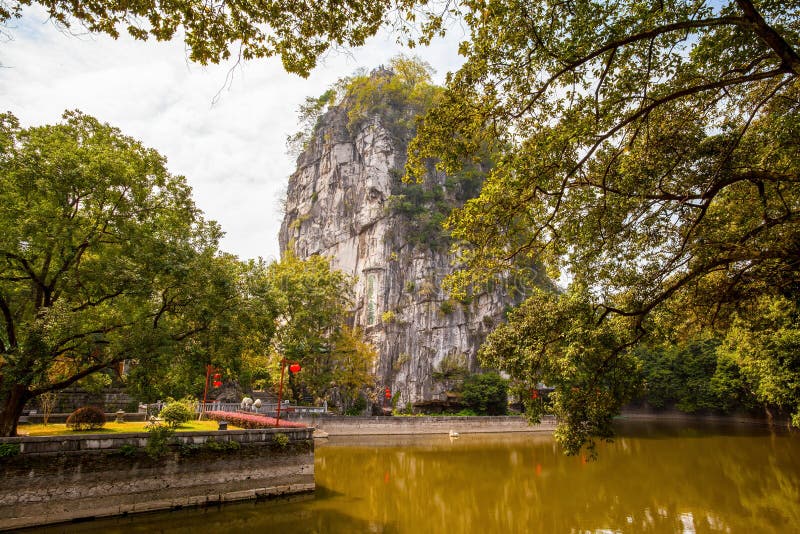
An Essential Guide to Visiting Zhao Wangcheng Ruins
In This Guide
- An Essential Guide to Visiting Zhao Wangcheng Ruins
- The Rich History and Legends of Zhao Wangcheng Ruins
- Main Highlights: What You Absolutely Can’t Miss
- Planning Your Visit: A Practical Guide
- Tickets: Prices, Booking, and Tips
- How to Get There: A Complete Transportation Guide
- Local Cuisine and Accommodation Nearby
- Frequently Asked Questions
- Final Thoughts on Your Trip
Visiting the Zhao Wangcheng Ruins is akin to stepping back in time to the Warring States period of ancient China, where the echoes of history resonate through the remnants of what was once a majestic capital. Nestled in the southwestern part of Handan, Hebei Province, the Zhao Wangcheng (赵王城) site is not just an archaeological marvel; it is a testament to the enduring legacy of the Zhao Kingdom, offering an unparalleled glimpse into the architectural and cultural sophistication of one of China’s most significant historical eras.
A Journey Through Time
Discovered in the early 21st century, the Zhao Wangcheng Ruins stand as the most well-preserved ancient city site from the Warring States period. Spanning an impressive area of approximately 505 hectares, the site comprises three connected city sections—East, West, and North—shaped like the character for “品”. Visitors will find themselves walking along the original earthen walls, with some sections towering between three to eight meters, providing a tangible connection to the past.
Architectural Wonders
The ruins are particularly noted for their impressive layout, featuring a series of well-defined building foundations and remnants of city gates that speak volumes about the urban planning of the time. The highlight of Zhao Wangcheng is the “Longtai,” a significant platform that likely served as the foundation for the royal palace, symbolizing the grandeur of the Zhao dynasty. As you wander through the site, the carefully arranged bases of what were once grand structures reveal the intricate planning and artistic vision of a civilization that thrived more than two millennia ago.
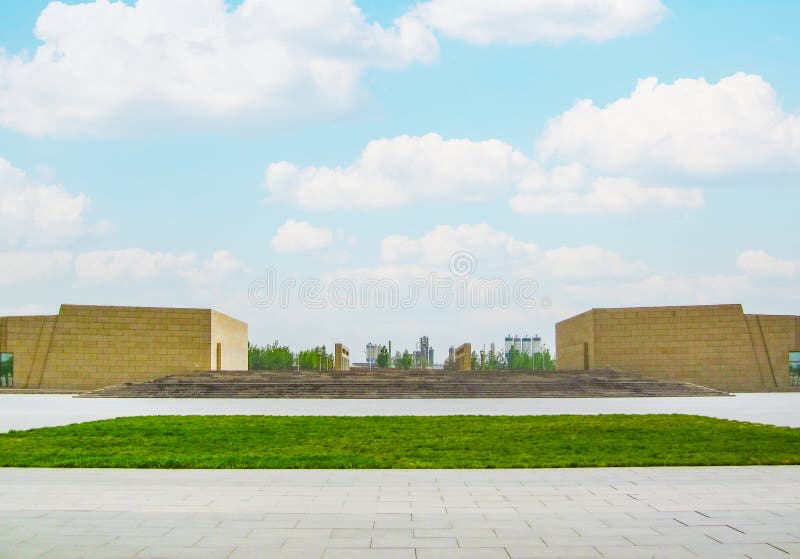
Zhao Wangcheng Ruins.
Cultural Significance
The Zhao Wangcheng Ruins are recognized as a key national cultural heritage site, offering insights into the political and military prowess of the Zhao Kingdom. The site also houses a museum that showcases artifacts and exhibits detailing the history and cultural evolution of the Zhao people, making it a vital resource for understanding early Chinese feudal society.
Visitor Experience
Open year-round and free of charge, the site invites history enthusiasts and casual visitors alike to explore its rich tapestry of heritage. A recommended visit duration of 1-2 hours allows ample time to soak in the atmosphere, capture stunning photographs, and reflect on the historical events that unfolded within these walls. As you navigate the ancient pathways, you may find yourself envisioning the royal ceremonies, military parades, and daily life that once animated this thriving capital.
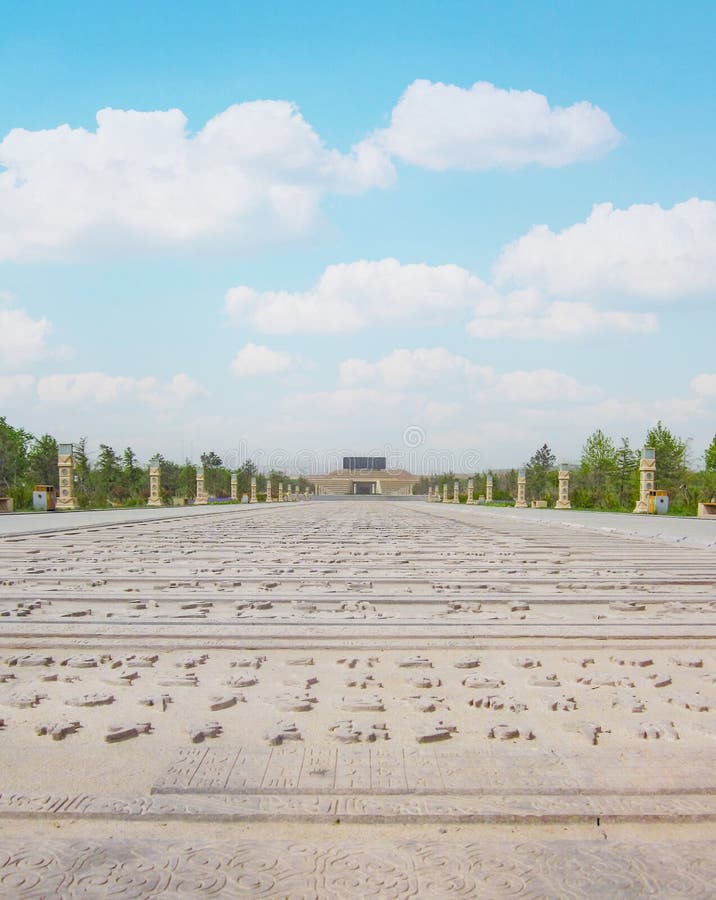
Zhao Wangcheng Ruins.
Getting There
Reaching the Zhao Wangcheng Ruins is convenient, with access via public transport from central Handan, making it an easily attainable destination for anyone eager to delve into the depths of Chinese history.
In summary, the Zhao Wangcheng Ruins are more than just remnants of an ancient civilization; they are a gateway to understanding the essence of China’s historical narrative. Whether you are an avid historian or simply seeking a unique travel experience, this site promises to enrich your journey through the annals of time.
The Rich History and Legends of Zhao Wangcheng Ruins
Nestled in the southwestern corner of Handan, Hebei Province, the Zhao Wangcheng Ruins (赵王城遗址公园) stand as a remarkable testament to the ancient Zhao Kingdom from the Warring States period (475–221 BC). This site not only offers a glimpse into the architectural prowess of early Chinese civilization but also holds an abundance of historical legends that enrich its legacy.
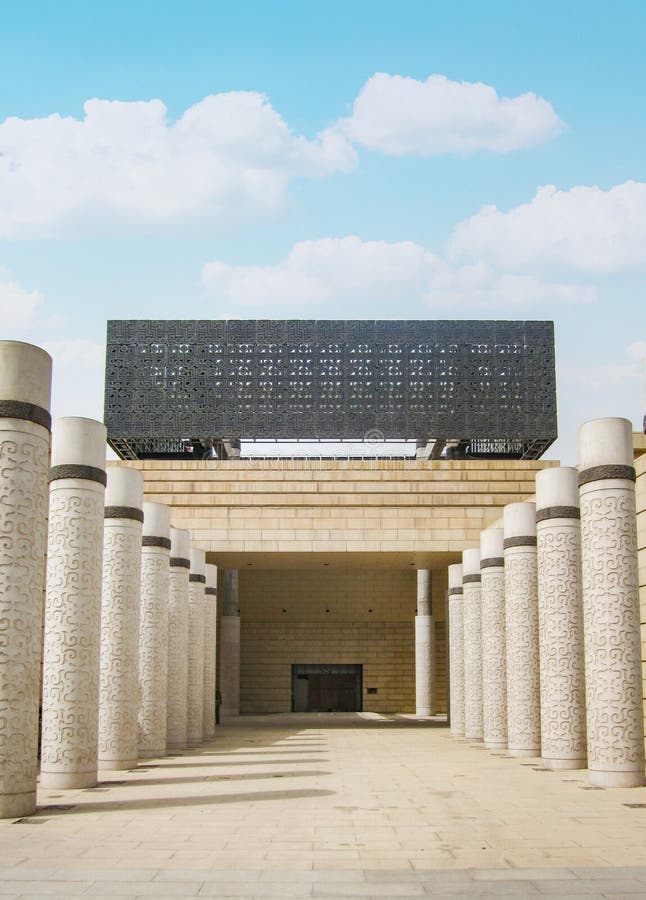
Zhao Wangcheng Ruins.
Historical Significance
Zhao Wangcheng, also known as the Zhao Capital Palace City, was established in 386 BC when King Jing of Zhao relocated his capital from the city of Handan. Over the course of 158 years, it served as the royal seat of eight successive monarchs. Today, it is recognized as the best-preserved ancient city site from the Warring States period in China and has been designated as a national key cultural relic protection site.
The city’s layout is reminiscent of a “品” character, encapsulating three smaller cities—East, West, and North—enclosed by earthen walls that rise between three to eight meters. The formidable walls and meticulously planned architectural foundations give visitors a sense of the grandeur that once marked the Zhao court.
Legends and Cultural Heritage
The Zhao Wangcheng Ruins are steeped in legends that reflect the values and ideals of ancient Chinese society. One of the most notable figures associated with Zhao is King Wuling (武灵王), who is remembered for his military reforms and cultural innovations. He famously adopted the “Hu clothing” style, which symbolized his belief in integrating with the northern tribes. This change was not merely a fashion statement but a strategic move that enabled Zhao to enhance its cavalry and military tactics, ultimately leading to significant victories.
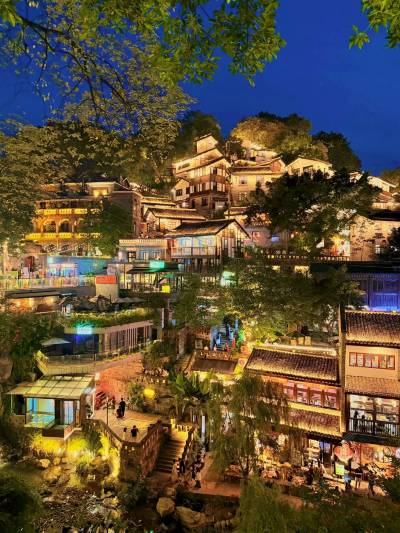
Zhao Wangcheng Ruins.
Another famed legend involves the valiant statesman Lin Xiangru (蔺相如), who is celebrated for his intelligence and diplomacy. His most famous act was the “Returning Chariot” incident, where he graciously let the rival general Lian Po pass, demonstrating the importance of humility and strategic patience in governance and warfare. This encounter is commemorated in local folklore and serves as a moral lesson in the value of compromise and respect.
Architectural Marvels
The remnants of the Zhao Wangcheng Ruins include impressive structures such as the “Longtai” (龙台), a large earthen platform believed to be the site of royal ceremonies. The architectural layout reveals a sophisticated understanding of urban planning, with clear divisions for residential, administrative, and ceremonial spaces. Excavations have uncovered numerous foundations and remnants of buildings, providing invaluable insights into the daily lives and governance of the Zhao people.
A Cultural Hub
Today, the Zhao Wangcheng Ruins are not merely a historical site; they have transformed into a cultural hub that celebrates the heritage of the Zhao Kingdom. The construction of the Zhao Wangcheng Museum, which showcases artifacts and provides interactive exhibits, further enhances the visitor experience. It serves as a repository of Zhao culture, featuring exhibitions on their art, literature, and philosophies that flourished during this dynamic period.
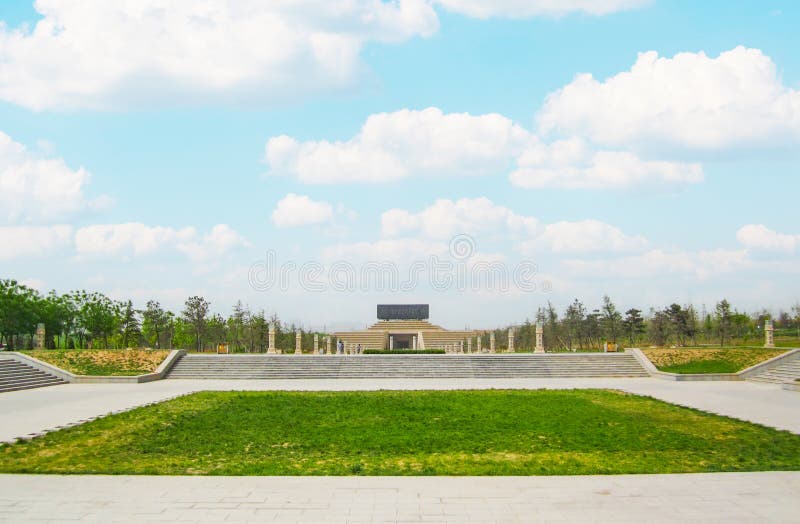
Zhao Wangcheng Ruins.
Conclusion
Visiting the Zhao Wangcheng Ruins offers an immersive journey through time, allowing travelers to walk in the footsteps of ancient kings and legendary figures. The site encapsulates the essence of Chinese history, rich with tales of valor, strategy, and cultural sophistication. Whether you are a history buff or a casual traveler, exploring these ruins is an opportunity to connect with the profound legacy of one of China’s most significant ancient states.
Main Highlights: What You Absolutely Can’t Miss
When visiting the Zhao Wangcheng Ruins, a treasure trove of ancient Chinese history, there are several key highlights that you simply cannot miss. This site, located in the heart of Handan, Hebei Province, offers a vivid glimpse into the grandeur of the Warring States period and the rich cultural heritage of the Zhao Kingdom.
The Architectural Marvel of Zhao Wangcheng
1. The City Layout
The ruins span approximately 505 acres and consist of three distinct sections: East City, West City, and North City. The layout is reminiscent of a “品” character, showcasing the strategic planning typical of ancient Chinese urban design. The remnants of earthen walls rise between 3 to 8 meters, giving visitors an idea of the formidable structure that once stood here.
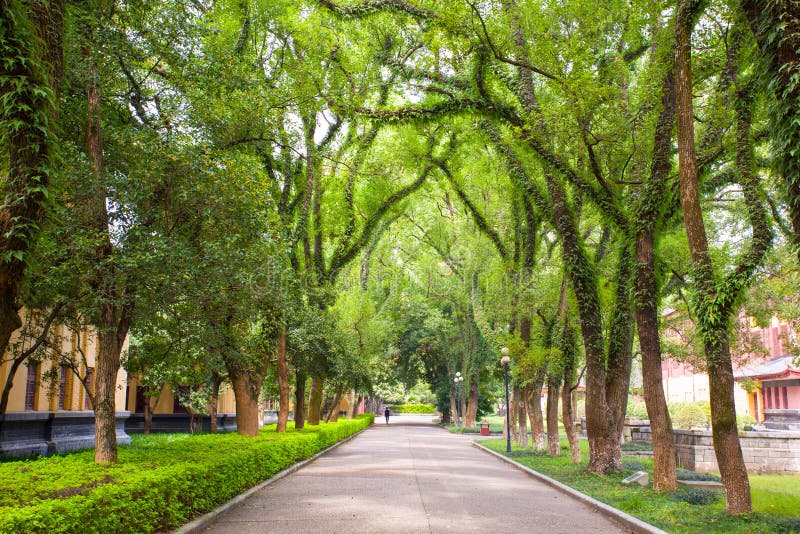
Zhao Wangcheng Ruins.
2. Dragon Platform (龙台)
One of the most impressive features is the Dragon Platform, a grand foundation measuring 285 meters in length, 265 meters in width, and reaching a height of 19 meters. This platform is believed to be the site of the main palace during the Zhao Kingdom, serving as a focal point for royal ceremonies and governance.
3. The Southern and Northern Command Platforms
Adjacent to the Dragon Platform, you can explore the remains of the Southern and Northern Command Platforms. These structures are said to have been used for military reviews and strategic planning, reflecting the martial spirit of the Zhao state.
Cultural Significance and Exhibits
4. Zhao Cultural Museum
The flagship Zhao Cultural Museum is an essential stop for anyone wishing to deepen their understanding of the Zhao Kingdom’s history. It features an extensive collection of artifacts, multimedia displays, and interactive exhibits that narrate the evolution of Zhao culture and its historical significance. The museum is designed to combine historical symbols with modern presentation techniques, making the rich history accessible and engaging.

Zhao Wangcheng Ruins.
5. The Historical Scroll (历史长卷)
As you stroll through the park, look for the “Historical Scroll,” an impressive 158-meter-long installation made of granite tablets. Each tablet is inscribed with significant events and idiomatic expressions from the Zhao Kingdom, commemorating its 158 years of existence in Handan.
Scenic Surroundings and Leisure Activities
6. The Gardens and Green Spaces
The park surrounding the ruins is not simply a historical site but a beautifully landscaped area that combines history with nature. Visitors can enjoy leisurely walks among the meticulously maintained gardens, which bloom with a variety of flowers throughout the seasons, offering a serene backdrop to the ancient ruins.
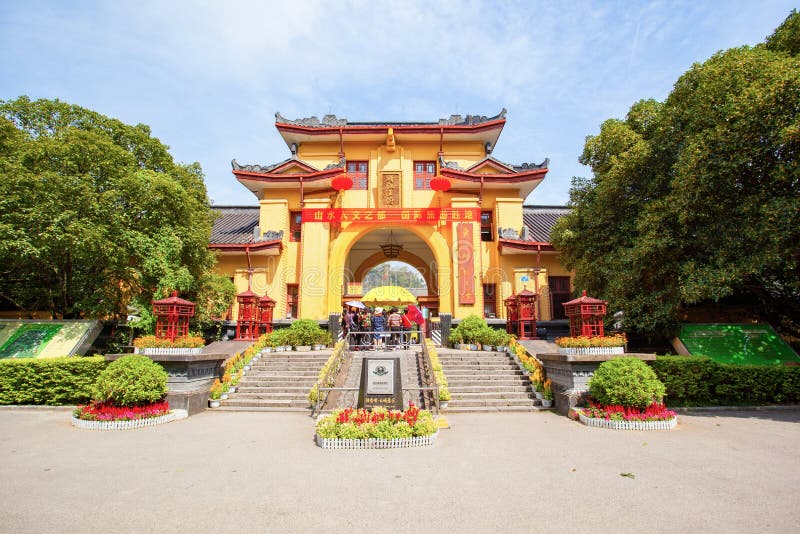
Zhao Wangcheng Ruins.
7. Cultural Performances and Events
Throughout the year, the park hosts various cultural performances, reenactments, and festivals that celebrate the heritage of the Zhao Kingdom. Participating in these events can provide a unique insight into ancient customs and traditions, bringing history to life in a vibrant and engaging way.
Practical Information
Visiting Details
– Address: South Ring Road, Handan, Hebei Province, China
– Opening Hours: Open year-round, 24/7
– Admission: Free
– Recommended Visit Duration: 1-2 hours
Conclusion
The Zhao Wangcheng Ruins are more than just an archaeological site; they are a portal to understanding the complexities of ancient Chinese civilization. From the impressive architectural remnants to the enlightening exhibits, this site promises an enriching experience for history buffs and casual travelers alike. Make sure to allocate sufficient time to immerse yourself in the captivating stories that these ruins have to tell.
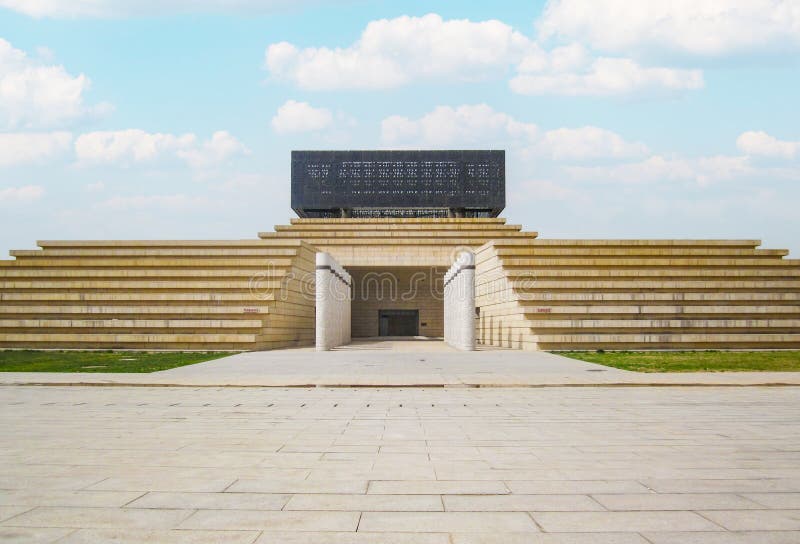
Zhao Wangcheng Ruins.
Planning Your Visit: A Practical Guide
Essential Visitor Information for Zhao Wangcheng Ruins
Visiting the Zhao Wangcheng Ruins, also known as the Zhao Capital Ruins, is a captivating journey into ancient Chinese history, particularly the Warring States period. This site, located in Handan, Hebei Province, offers a unique glimpse into the architectural and cultural legacy of the Zhao Kingdom. Here’s everything you need to know to plan your visit effectively.
Location and Accessibility
- Address: Zhao Wangcheng Ruins Park, South Ring Road, Handan, Hebei, China.
- Getting There:
- By Public Transport: You can take bus 301 from Handan Railway Station, which will take you directly to the park.
- By Taxi: Taxis are readily available and can provide a more direct route to the site.
- Driving: Ample parking is available near the entrance for those choosing to drive.
Opening Hours and Admission
- Opening Hours: The park is open year-round, 24/7. However, the Zhao Wangcheng Museum within the park operates from Tuesday to Sunday, 9 AM to 11 AM and 2 PM to 4 PM.
- Admission Fees: Entrance to the ruins is free, making it an accessible destination for all travelers.
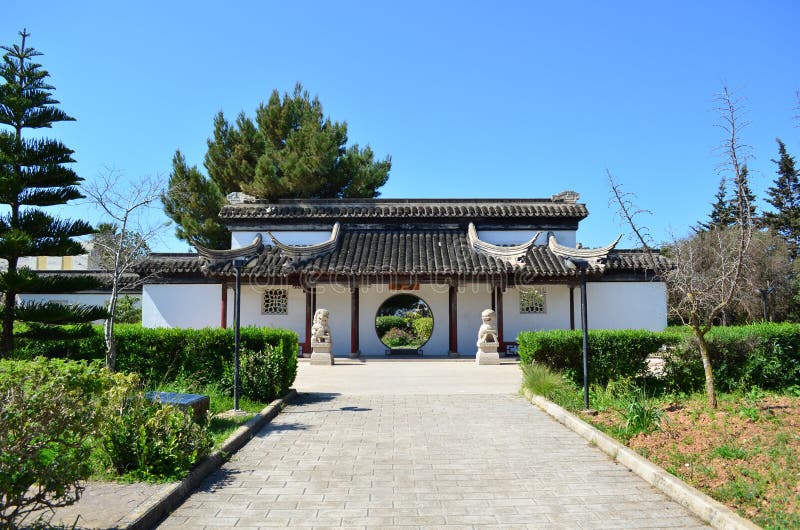
Zhao Wangcheng Ruins.
Recommended Duration of Visit
Plan for 1 to 2 hours to explore the ruins thoroughly. This will give you sufficient time to wander around the expansive site, absorb the historical context, and enjoy the scenic surroundings.
Key Attractions Within the Park
- The Great Wall of Zhao: One of the earliest Great Walls in northern China, remnants can be seen along the hills of the Yinshan Mountain range.
- Architectural Remains: Explore the remains of the earthen city walls, which stand 3 to 8 meters in height, and various building foundations scattered across the park.
- Zhao Wangcheng Museum: This museum offers deeper insights into the history and culture of the Zhao Kingdom, showcasing artifacts and exhibits related to the site.
- Scenic Views: The park is located at the base of the Yinshan Mountains, providing a picturesque backdrop for your visit.
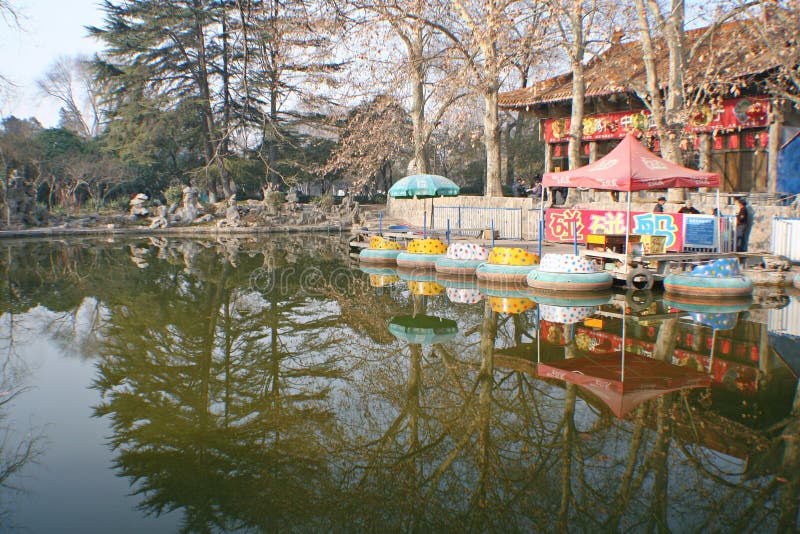
Zhao Wangcheng Ruins.
Best Time to Visit
The Zhao Wangcheng Ruins can be visited year-round. However, for the most pleasant experience, consider going during the spring (April to June) or autumn (September to November) when the weather is mild and the surrounding nature is at its most beautiful.
Nearby Attractions
While visiting Zhao Wangcheng Ruins, consider exploring other nearby sites:
- Dazhao Temple: A historic temple known for its stunning architecture and serene atmosphere, approximately 6.4 km from the ruins.
- Whistling Dune Bay: Famous for its desert-like scenery, this area is perfect for photography and enjoying nature.
- Jiufengshan Mountain Natural Reserve: Ideal for hiking and enjoying breathtaking views of the landscape.
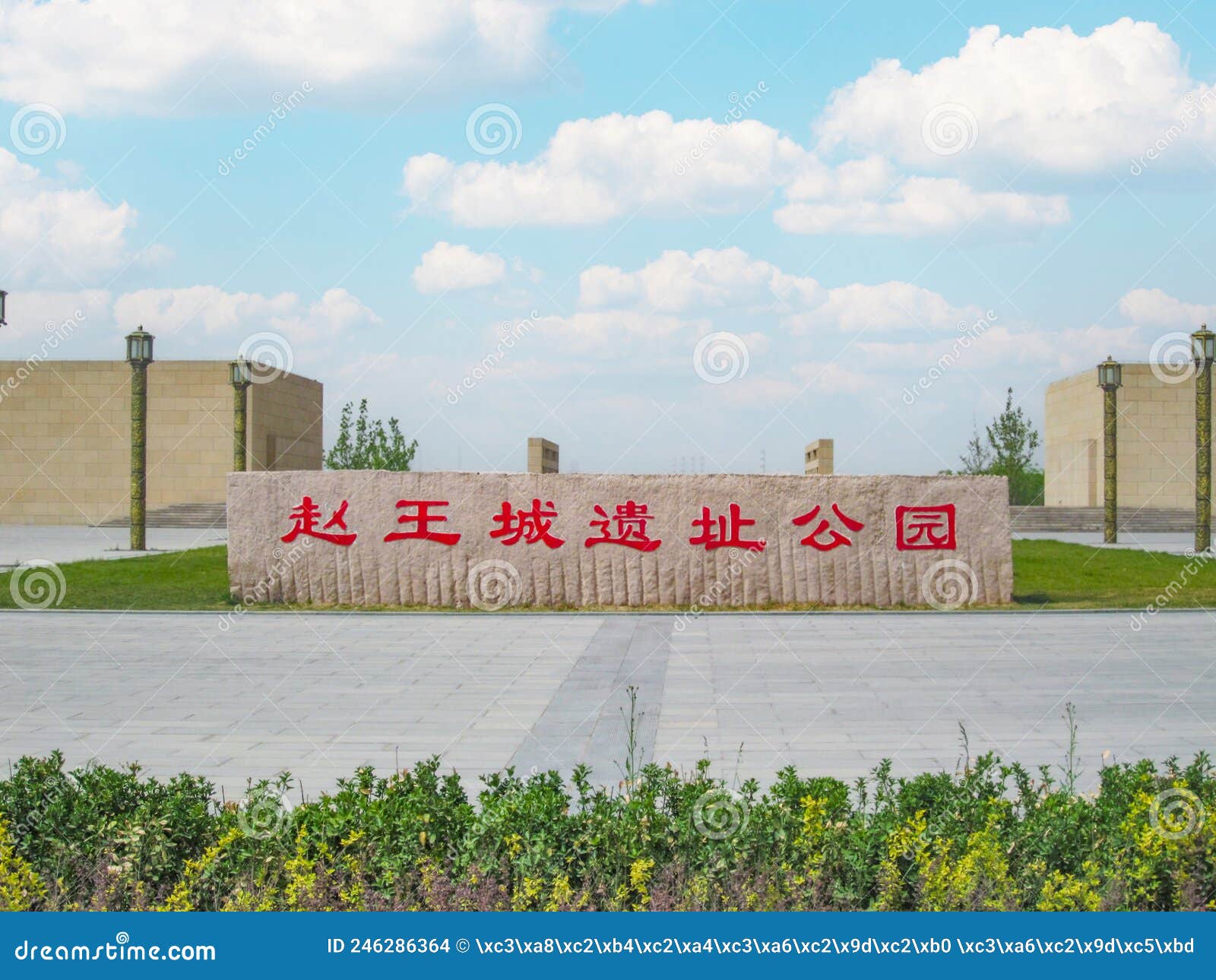
Zhao Wangcheng Ruins.
Dining and Accommodation
Although the park itself does not have dining facilities, numerous restaurants and eateries are located within a short distance. Popular recommendations include:
- Haidilao Hotpot: A well-known chain for delicious hotpot, located about 7.4 km from the park.
- Local Chinese Restaurants: Explore local cuisine at various restaurants within Handan city.
For accommodation, consider staying at nearby hotels such as:
- Handan Jinlong Hotel: Offering comfortable lodging options.
- Handan Century Crown Hotel: A well-rated choice for travelers seeking quality amenities.
Practical Tips
- Wear Comfortable Shoes: The park covers a significant area and involves a fair amount of walking.
- Bring Water and Snacks: While there are nearby food options, it’s wise to have refreshments with you, especially on warmer days.
- Respect the Site: As a historical site, it is important to maintain cleanliness and respect the ruins.
Embarking on a visit to the Zhao Wangcheng Ruins will not only enhance your understanding of ancient Chinese culture but also provide a serene environment to reflect on the region’s rich history. Enjoy your journey through time!
Tickets: Prices, Booking, and Tips
When planning your visit to the Zhao Wangcheng Ruins (赵王城遗址公园), it’s essential to know the ticketing details, including prices, booking information, and useful tips to enhance your experience. This remarkable site, known for being one of the best-preserved ancient ruins from the Warring States period, offers a deep dive into China’s historical heritage.
Ticket Information
-
Entry Fee: Admission to the Zhao Wangcheng Ruins is free. This makes it an excellent choice for budget-conscious travelers eager to explore China’s rich history without incurring additional costs.
-
Opening Hours: The site is open year-round, 24/7. However, if you plan to visit the Zhao Wangcheng Museum, which focuses on the history and culture of the Zhao state, note that its hours are slightly more restricted:
- Tuesday to Sunday: 9:00 AM – 11:00 AM and 2:00 PM – 4:00 PM
- Closed on Mondays
Booking Tips
-
Plan Ahead: While entry is free, it is advisable to check if there are any special exhibitions or events at the museum that may require prior booking.
-
Transportation: The ruins are located in Baotou City, Inner Mongolia. To reach the site:
-
Public Transport: Use local buses or taxis to get there. The nearest bus stop is accessible from several parts of the city, ensuring convenient transport options.
-
Best Time to Visit: The site can be enjoyed throughout the year. However, for an optimal experience, consider visiting during the spring or autumn months when the weather is pleasant for walking and exploring the expansive grounds.
-
Duration of Visit: Allocate 1 to 2 hours for a thorough exploration of the ruins. This allows ample time to appreciate the historical significance and take in the stunning views of the surrounding landscape.
Additional Visitor Tips
-
Dress Comfortably: Wear comfortable shoes, as the site is extensive and involves a fair amount of walking over uneven terrain.
-
Photography: The ruins offer fantastic photo opportunities, so don’t forget your camera! Capture the remnants of the ancient walls and the scenic backdrop of the Yinshan Mountains.
-
Respect the Site: As a culturally significant location, it’s important to respect the historical integrity of the ruins. Stay on marked paths and refrain from climbing on walls or structures.
-
Learning Resources: Consider reading a brief history of the Zhao Kingdom before your visit. This context will enrich your understanding and appreciation of what you see.
By following these guidelines, your visit to the Zhao Wangcheng Ruins promises to be not only enlightening but also enjoyable, providing a unique glimpse into China’s ancient civilization.
How to Get There: A Complete Transportation Guide
Visiting the Zhao Wangcheng Ruins (赵王城遗址公园) offers travelers a unique glimpse into China’s rich historical tapestry. Located in Handan, Hebei Province, this site is renowned as one of the best-preserved remnants of the Warring States period. To ensure a smooth journey to this cultural treasure, here’s a comprehensive guide on how to get there.
Getting to Zhao Wangcheng Ruins
By Air
- Nearest Airport: The closest major airport is Shijiazhuang Zhengding International Airport (SJW), approximately 120 kilometers away from Handan. From the airport, you can opt for:
- Airport Shuttle Bus: Buses run regularly to Handan.
- Taxi: A taxi ride will take about 1.5 hours and cost around 300 CNY ($45 USD).
By Train
- Train Stations: Handan has a well-connected train station, Handan Railway Station, which serves high-speed trains from major cities like Beijing, Shanghai, and Xi’an.
- From Beijing: High-speed trains take roughly 2-3 hours.
- From Shanghai: Expect a journey of about 6-7 hours.
- From the Train Station to the Ruins:
- Public Bus: Take Bus 301 directly to Zhao Wangcheng Ruins.
- Taxi: A taxi will take about 15-20 minutes and cost around 20-30 CNY ($3-5 USD).
By Bus
- Long-Distance Buses: Handan’s long-distance bus station has services from various provinces and cities.
- Local Transport: Upon arriving in Handan, you can catch local buses or taxis to reach the ruins.
By Car
- Driving Directions: If you choose to drive, take the G4 Beijing-Hong Kong-Macau Expressway and follow the signs to Handan. Upon entering the city, use a GPS or navigation app to find Zhao Wangcheng Ruins located in the Jiuyuan District.
- Parking: There is parking available near the entrance of the park.
Public Transport Details
- Local Buses: The public bus network in Handan is efficient and budget-friendly. Bus 301 is particularly useful, providing direct access to the ruins.
- Taxi Services: Taxis are readily available throughout Handan. Always ensure that the meter is running to avoid overcharges.
Admission Information
- Entrance Fees: The Zhao Wangcheng Ruins are free to enter, making it an accessible destination for all travelers.
- Operating Hours: The park is open year-round, allowing for flexibility in planning your visit.
Best Time to Visit
- The ruins can be explored year-round, but spring and autumn offer the most pleasant weather. Aim for early mornings or late afternoons to avoid the crowds and enjoy the serenity of the site.
Nearby Attractions
- After exploring Zhao Wangcheng Ruins, consider visiting other historical sites in Handan, such as:
- Dazhao Temple: A beautiful ancient temple nearby.
- Meiligeng Scenic Area: Known for its picturesque landscapes.
- Whistling Dune Bay: A unique desert experience not far from the city.
Conclusion
Traveling to the Zhao Wangcheng Ruins is an enriching experience steeped in history. Whether you choose to fly, take a train, or drive, the journey is well worth it. Prepare for an awe-inspiring exploration of one of China’s most significant archaeological sites, where the echoes of the past resonate through the ancient walls.
Local Cuisine and Accommodation Nearby
When visiting the Zhao Wangcheng Ruins in Handan, you can immerse yourself in the local culture not only through the historical site but also through the enticing flavors of regional cuisine and comfortable accommodations nearby.
Culinary Delights
1. Traditional Handan Dishes
– Bawang Hot Pot (八大碗): This is a must-try dish when in Handan. Known for its rich and spicy flavors, Bawang Hot Pot offers a variety of fresh ingredients cooked in a bubbling pot right at your table. Enjoy it in a lively atmosphere at popular hot pot restaurants like Hai Di Lao or Ba Nu Maodu Hot Pot.
-
Lamb Skewers (羊肉串): Handan is famous for its grilled lamb skewers, seasoned to perfection with spices that enhance their flavor. You can find these delicious treats at various street stalls and barbecue shops, often accompanied by a refreshing glass of local beer.
-
Fried Noodles (炸酱面): Don’t miss out on Handan’s signature dish of fried noodles topped with a savory bean paste sauce and fresh vegetables. Places like Lucky Noodles serve up this classic dish that is both hearty and satisfying.
2. Local Restaurants
– Xiao Fang Niu Chuan Restaurant (小放牛炒菜馆): A local favorite known for its authentic dishes, this restaurant offers a cozy dining atmosphere where you can enjoy traditional Handan cuisine.
– Jin Tang Ju (金汤居): Renowned for its exquisite soup dishes and fresh ingredients, this restaurant is perfect for trying out a variety of local flavors.
Comfortable Accommodations
1. Hotels
– Handan Jinlong Hotel (邯郸金龙大酒店): This upscale hotel provides modern amenities, comfortable rooms, and a convenient location close to the city’s attractions, making it a great choice for travelers looking for comfort and accessibility.
-
Century Crown Hotel (邯郸世纪皇冠大酒店): Offering luxurious accommodations with excellent service, this hotel is equipped with various facilities including dining options that serve both local and international cuisine.
-
Holiday Inn Express Handan (智选假日酒店): A great option for budget-conscious travelers, this hotel combines comfort with affordability, providing a pleasant stay with easy access to public transport.
2. Guesthouses and B&Bs
– Shangheju Inn (上和居民宿): For those looking for a more intimate experience, this charming guesthouse offers personalized service and a taste of local hospitality. It’s situated in a peaceful neighborhood, ideal for relaxation after a day of exploration.
- Longyuan B&B (龙苑民宿): This cozy bed-and-breakfast offers comfortable rooms and a warm atmosphere, perfect for travelers seeking a homely feel. Enjoy traditional breakfasts featuring local ingredients each morning.
Conclusion
Your visit to the Zhao Wangcheng Ruins will be enhanced by indulging in the vibrant local cuisine and enjoying the comfort of nearby accommodations. Whether you are savoring a bowl of fried noodles or relaxing in a well-appointed hotel, Handan offers a delightful blend of history, culture, and culinary adventure.
Frequently Asked Questions
Common Inquiries About Zhao Wangcheng Ruins
1. Where is Zhao Wangcheng Ruins located?
The Zhao Wangcheng Ruins, also known as the Zhao Capital Ruins, are situated in Diaomiao Village, Jiuyuan District, Baotou City, Inner Mongolia, China. This historical site is nestled at the southern foot of the Yinshan Mountains, surrounded by a picturesque landscape of hills and fertile plains.
2. What is the historical significance of Zhao Wangcheng?
Zhao Wangcheng is one of the best-preserved ancient city ruins from the Warring States period in China. It served as the capital of the Zhao State, reflecting the architectural and cultural achievements of the time. The site is crucial for understanding early Chinese feudal society and urban planning.
3. What are the opening hours and entry fees for the site?
The Zhao Wangcheng Ruins are open year-round, allowing visitors to explore at their convenience. Admission is free, making it an accessible destination for both local and international travelers.
4. How much time should I allocate for visiting Zhao Wangcheng Ruins?
It is recommended to spend 1 to 2 hours exploring the ruins. This duration should suffice for a leisurely stroll through the site, allowing time to appreciate the historical remains, take photographs, and absorb the cultural significance of this ancient landmark.
5. What are the must-see features within the ruins?
Key highlights of the Zhao Wangcheng Ruins include:
– The earth-built city walls, which rise between 3 to 8 meters, showcasing ancient construction techniques.
– The Dragon Platform (龙台), believed to be the foundation of the main palace, is a focal point of the archaeological site.
– Remnants of various architectural bases and city gates that illustrate the layout and grandeur of the ancient capital.
6. Are there nearby attractions worth visiting?
Yes, several attractions are within close proximity to Zhao Wangcheng Ruins, including:
– Zhaobei Great Wall of the Warring States Period
– Meiligeng Scenic Area
– Dazhao Temple
These sites can enhance your cultural exploration of the region.
7. What is the best time of year to visit Zhao Wangcheng Ruins?
The site is open and appealing to visitors year-round. However, spring (April to June) and autumn (September to November) are particularly pleasant, offering comfortable weather for outdoor exploration.
8. How can I get to Zhao Wangcheng Ruins?
The ruins are accessible by public transport, with local buses frequently operating from Baotou City. You can take a bus to the nearby Diaomiao Village stop. For convenience, consider checking local transport schedules or using a ride-hailing service for direct access.
Final Thoughts on Your Trip
As you wrap up your journey through the Zhao Wangcheng Ruins, take a moment to reflect on the rich tapestry of history and culture that unfolds before you. This ancient site, a testament to the strategic ingenuity and architectural prowess of the Zhao State during the Warring States period, offers a unique glimpse into China’s storied past.
Key Takeaways:
– Historical Significance: Zhao Wangcheng is not just an archaeological site; it represents the resilience and sophistication of early Chinese civilizations. Its well-preserved walls and layout echo the complexities of a society that thrived over two millennia ago.
– Cultural Immersion: The park serves as a cultural hub, showcasing the evolution of Zhao culture through its museums and exhibitions. Engaging with the artifacts and narratives allows for a deeper understanding of the Zhao dynasty’s contributions to Chinese history.
– Scenic Beauty: Nestled at the foot of the Yinshan Mountains, the ruins are surrounded by stunning landscapes that invite exploration and reflection. The contrast of ancient structures against the natural backdrop creates a serene atmosphere perfect for contemplation.
Practical Tips:
– Plan Your Visit: Allocate 1-2 hours to fully appreciate the site. The ruins are open year-round, allowing you the flexibility to visit at your convenience.
– Explore Nearby Attractions: Don’t miss the opportunity to explore complementary sites like the Zhaobei Great Wall and the Meiligeng Scenic Area, which enhance your understanding of the region’s historical context.
In conclusion, your visit to the Zhao Wangcheng Ruins is not merely an excursion into the past; it’s an invitation to connect with the legacies that shaped modern China. As you leave this remarkable site, carry with you the stories of the Zhao dynasty, a culture that continues to inspire and educate. May your travels through China’s rich landscapes and histories fuel your curiosity and appreciation for this ancient civilization. Safe travels!